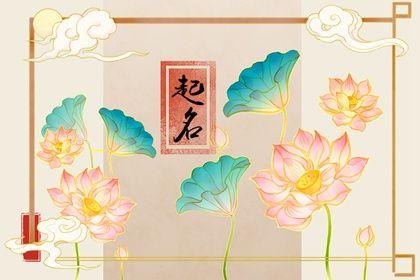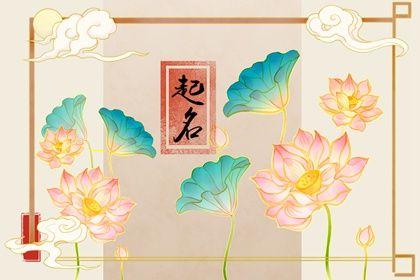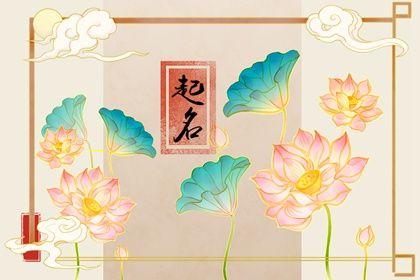如何给土特产起一个令人惊艳的名字
- 作者: 杨政然
- 来源: 投稿
- 2024-07-26
一、如何给土特产起一个令人惊艳的名字
1. 突出产地特色地域名 + 特产名:如“阳澄湖大闸蟹”、“西湖龙井茶”
产地 + 形容词:如“金华火腿”、“宣威火腿”
2. 强调品质和工艺品质形容词 + 特产名:如“极品普洱茶”、“上等羊绒衫”
工艺特点 + 特产名:如“手工刺绣苗服”、“古法酿造酱油”
3. 运用比喻和拟人比喻:如“黄金蜜桔”、“珍珠奶茶”
拟人:如“会跳舞的葡萄”、“会唱歌的鸟巢”
4. 结合文化元素历史典故:如“秦始皇兵马俑”、“唐三彩”
神话传说:如“盘古开天”、“女娲补天”
5. 采用谐音和双关谐音:如“福临门”(福临门酱油)
双关:如“一鸣惊人”(鸣人鸡蛋)
6. 考虑情感诉求唤起乡愁:如“故乡的味道”、“妈妈的手艺”
表达祝福:如“福气满满”、“吉祥如意”
7. 避免使用过于通俗或生僻的词语
通俗:如“土特产”、“农产品”
生僻:如“藠头”、“藠菜”
8. 结合市场调研了解目标受众的喜好和需求
避免与其他同类产品重名
9. 考虑商标注册起名后应及时注册商标,保护知识产权
二、如何给土特产起一个令人惊艳的名字英语
How to Name Your Local Delicacy with a Bang
1. Tap into Local Lore and History:
Explore the region's unique stories, legends, and historical events.
Consider the origin of the delicacy and its connection to the local culture.
2. Highlight the Sensory Experience:
Use descriptive words that evoke the taste, texture, aroma, and appearance of the delicacy.
Consider using adjectives like "savory," "sweet," "tangy," "crunchy," or "fragrant."
3. Use Metaphors and Similes:
Compare the delicacy to something else that captures its essence.
For example, "Sweet as honey" or "As soft as a cloud."
4. Play with Alliteration and Assonance:
Create a catchy name by using words that sound similar.
For example, "Luscious Lemon Loaf" or "Delectable Date Delight."
5. Consider the Target Audience:
Think about who you want to appeal to with your name.
Use language that resonates with their interests and preferences.
6. Keep it Short and Sweet:
A memorable name should be easy to remember and pronounce.
Aim for a name that is no longer than 3-4 words.
7. Test it Out:
Get feedback from friends, family, or potential customers.
See if the name is easy to understand, appealing, and memorable.
Examples of Stunning Local Delicacy Names:
Honeyed Haven Hazelnut Spread
Tangy Tamarind Temptation
Savory Saffron Spice
Crunchy Coconut Caramel
Delectable Date Delight
Luscious Lemon Loaf
Sweet as Honey Honeycomb
As Soft as a Cloud Cotton Candy
Fragrant Figgy Fudge
Savory Smoked Salmon Spread

三、如何给土特产起一个令人惊艳的名字英文
如何为土特产起一个令人惊艳的英文名字
1. 突出其独特品质:
强调其原产地或产区,例如 "Sonoma Valley Chardonnay" 或 "Tuscan Olive Oil"。
突出其独特的风味或特性,例如 "Spicy Szechuan Peppercorns" 或 "Sweet and Tangy Mango Chutney"。
2. 使用感官描述:唤起感官体验,例如 "Velvety Smooth Chocolate" 或 "Crisp and Refreshing Apple Cider"。
使用生动的形容词,例如 "Golden Honey" 或 "Emerald Green Tea"。
3. 借鉴文化或历史:
融入当地传说或历史事件,例如 "Legend of the Lost Inca Gold" 或 "Ancient Egyptian Papyrus Scrolls"。
使用与该地区相关的传统名称,例如 "Geisha Green Tea" 或 "Himalayan Pink Salt"。
4. 创造一个引人注目的故事:
讲述一个关于产品起源或制作过程的故事,例如 "The Alchemist's Elixir" 或 "The Artisan's Craft"。
使用比喻或隐喻来创造一个令人难忘的印象,例如 "Symphony of Spices" 或 "Dance of Flavors"。
5. 保持简洁明了:使用简短、有力的名称,易于记住和发音。
避免使用冗长的或难以理解的术语。
6. 考虑目标受众:了解您的目标受众的兴趣和偏好。
使用与他们产生共鸣的语言和风格。
7. 进行市场调研:研究竞争对手的名称并确定市场空白。
征求客户和行业专家的反馈。
示例:"Celestial Elixir" (高级茶叶)
"Symphony of Spices" (异国香料混合)
"Artisan's Craft" (手工制作的陶器)
"Legend of the Lost Inca Gold" (秘鲁咖啡)
"Golden Honey of the Nile" (埃及蜂蜜)
四、如何给土特产起一个令人惊艳的名字呢
1. 突出产地特色地域名称:如“徽州毛峰”、“阳澄湖大闸蟹”
自然景观:如“九寨沟藏红花”、“香格里拉松茸”
历史文化:如“西安兵马俑酥”、“敦煌莫高窟飞天饼”
2. 强调产品品质天然、有机:如“有机山茶油”、“天然蜂蜜”
传统工艺:如“手工刺绣”、“古法酿造”
稀有、珍贵:如“野生灵芝”、“百年老参”
3. 运用比喻和拟人形象生动:如“金丝楠木”、“玉露香茗”
情感共鸣:如“故乡的味道”、“妈妈的手艺”
文化内涵:如“龙井问茶”、“兰亭雅集”
4. 结合当地传说或故事
神话传说:如“盘古开天”、“女娲补天”
历史典故:如“秦始皇兵马俑”、“唐朝仕女图”
民间故事:如“牛郎织女”、“孟姜女哭长城”
5. 运用谐音或双关谐音:如“福临门”(福临门大米)
双关:如“金玉满堂”(金玉满堂花生)
寓意吉祥:如“招财进宝”(招财进宝糖果)
6. 考虑目标受众高端市场:如“御品”、“珍藏”
大众市场:如“家常”、“实惠”
特定人群:如“养生”、“儿童”
7. 避免使用过于通俗或俗气的名称
避免使用泛泛而谈的名称:如“土特产”、“农产品”
避免使用过于直白的名称:如“大米”、“蔬菜”
避免使用带有负面含义的名称:如“土里土气”、“粗制滥造”



